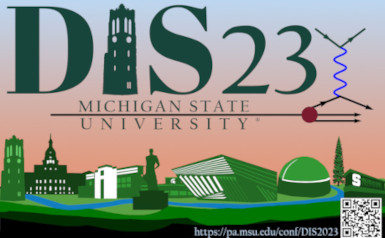Speaker
Description
An overview of the latest NA62 results and the future prospect of the experiment are presented. The NA62 experiment at CERN collected the world’s largest dataset of charged kaon decays in 2016-2018, leading to the first measurement of the branching ratio of the ultra-rare $K^+ \rightarrow \pi^+ \bar\nu \nu$ decay, based on 20 candidates.
The radiative kaon decay $K^+ \rightarrow \pi^0 e^+ \nu \gamma$ (Ke3g) was studied with a data sample of O(100k) Ke3g candidates with sub-percent background contaminations recorded in 2017-2018. The most precise measurements of the branching ratio and of T-asymmetry are achieved.
An analysis of the flavour-changing neutral current $K^+ \rightarrow \pi^+ \mu^+ \mu^-$ decay, based on about 27k signal events with negligible background contamination collected in 2017 and 2018 with a dedicated pre-scaled di-muon trigger, leads to the most precise determination of the branching ratio and of the form factor.
New preliminary results are obtained from an analysis of the $K^+ \rightarrow \pi^+ \gamma \gamma$ decay using data collected in 2016-2018 with a minimum-bias trigger. The sample, about 15 times larger than the previous largest one, leads to an unprecedented sensitivity. This analysis can be naturally extended to search for the $K^+ \rightarrow a$, $a \rightarrow \gamma \gamma$ process, where a is a short-lived axion-like particle.
Dedicated trigger lines were employed to collect di-lepton final states, which allowed establishing new stringent upper limits on the rates of lepton flavour and lepton number violating kaon decays.
NA62 can also be run as a beam-dump experiment, by removing the kaon production target and moving the upstream collimators into a “closed” position. Analyses of the data taken in beam-dump mode were performed to search for visible decays of exotic mediators, with a particular emphasis on Dark Photon models.
The first observation of the decay $K^\pm \rightarrow \pi^0 \pi^0 \mu^\pm \nu$ (K00μ4) by the NA48/2 experiment at the CERN and the preliminary measurement of the branching ratio are also presented. The result is converted into a first measurement of the R form factor in Kl4 decays and compared with the prediction from 1-loop Chiral Perturbation Theory.
| Submitted on behalf of a Collaboration? | Yes |
|---|---|
| Participate in poster competition? | No |




